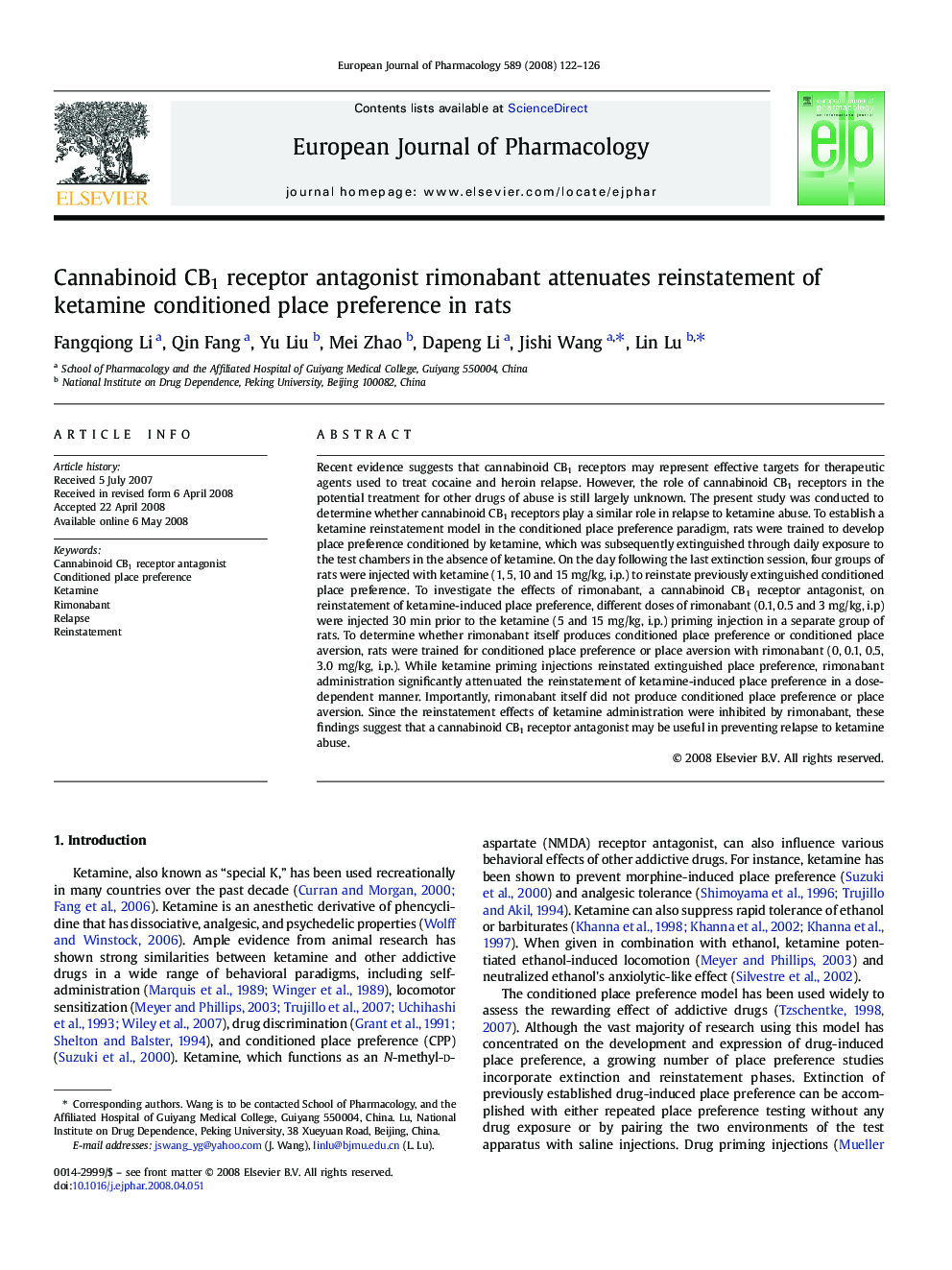| کد مقاله | کد نشریه | سال انتشار | مقاله انگلیسی | نسخه تمام متن |
|---|---|---|---|---|
| 2535103 | 1559107 | 2008 | 5 صفحه PDF | دانلود رایگان |

Recent evidence suggests that cannabinoid CB1 receptors may represent effective targets for therapeutic agents used to treat cocaine and heroin relapse. However, the role of cannabinoid CB1 receptors in the potential treatment for other drugs of abuse is still largely unknown. The present study was conducted to determine whether cannabinoid CB1 receptors play a similar role in relapse to ketamine abuse. To establish a ketamine reinstatement model in the conditioned place preference paradigm, rats were trained to develop place preference conditioned by ketamine, which was subsequently extinguished through daily exposure to the test chambers in the absence of ketamine. On the day following the last extinction session, four groups of rats were injected with ketamine (1, 5, 10 and 15 mg/kg, i.p.) to reinstate previously extinguished conditioned place preference. To investigate the effects of rimonabant, a cannabinoid CB1 receptor antagonist, on reinstatement of ketamine-induced place preference, different doses of rimonabant (0.1, 0.5 and 3 mg/kg, i.p) were injected 30 min prior to the ketamine (5 and 15 mg/kg, i.p.) priming injection in a separate group of rats. To determine whether rimonabant itself produces conditioned place preference or conditioned place aversion, rats were trained for conditioned place preference or place aversion with rimonabant (0, 0.1, 0.5, 3.0 mg/kg, i.p.). While ketamine priming injections reinstated extinguished place preference, rimonabant administration significantly attenuated the reinstatement of ketamine-induced place preference in a dose-dependent manner. Importantly, rimonabant itself did not produce conditioned place preference or place aversion. Since the reinstatement effects of ketamine administration were inhibited by rimonabant, these findings suggest that a cannabinoid CB1 receptor antagonist may be useful in preventing relapse to ketamine abuse.
Journal: European Journal of Pharmacology - Volume 589, Issues 1–3, 28 July 2008, Pages 122–126